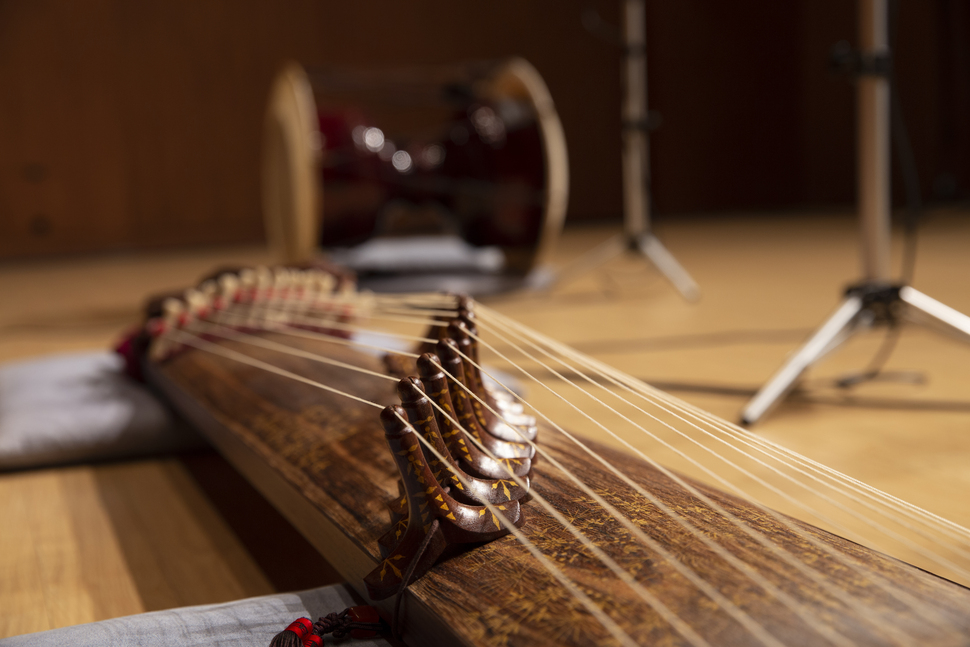GAYAGEUM

In ancient times the soft, earthy, delicate silken sound of the gayageum (Korean Zither) echoed across Korea. It accompanied singers, dancers and drummers in their artistic collaborations, and now today this ancient Korean instrument has found its way west. The Gayageum has a long history in Korea, once was an instrument played for royal palace celebrations. Scholars believe the gayageum was inspired by the guzheng, which is an ancient instrument from China. In the 19th century the sanjo gayageum was born, Sanjo means “scattered melodies”, which has moments of improvisation and fast tempo. During this time new works were written for the sanjo gayageum which has become the most standard version of the instrument today. The sweet honey like sound of the instrument comes from its silk strings, and the traditional paulownia wood body of the instrument.
Over the course of its long history, construction and the composition of many folk pieces, the gayageum has made its way into the western music world. Dazzling audiences with its rich sound, the gayageum has become a famed instrument across the world. One remarkable aspect of the Korean gayageum is its ability to fuse harmoniously with different instruments, creating an atmosphere of old and new. Contemporary Gayageum performers have gone viral on social media platforms for their new, exciting and innovative works on the gayageum. One of these creative masters is Koreas own, Luna Lee. Check out the groundbreaking work Luna is creating in this video.
With the global appreciation of gayageum music, new collaborations are taking place. These collaborations are paving grounds for future artists and creatives, and also building a cultural base for world music enthusiasts to enjoy today. Many people across the world have taken up learning the gaygeum, and in doing so, also learning new ways of expression for themselves. This global cultural exchange fosters a deep profound appreciation for gayageum, and its relevance in todays contemporary world. The art of gayageum represents a rich and ancient lineage, a balance of harmony and innovation, as well as the timelessness and elegance of Korean tradition.
